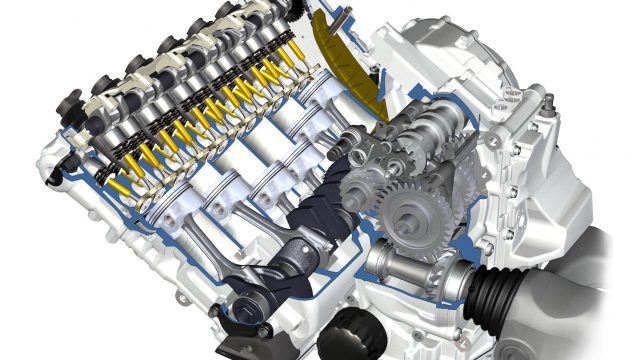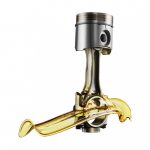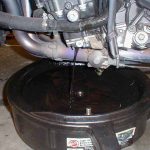From the viscosity rating to wear, here are five things you need to know before you buy new oil.
There’s an old saying that the lifetime of an engine is based on the quality of the oil. When it comes to motorcycles things are a bit more delicate. An average bike can reach up to 15k rpm and temperatures of 110 degrees Celsius on a daily basis. Think about these harsh working conditions when you schedule the next oil change.
The oil’s job
Imagine that the engine comes to life when you start it up. The fuel pump plays the role of the hearth, and the oil acts as blood. We all know that without the right amount and flux of blood things inside will go bad. The same rules apply to oil but fortunately with different consequence.
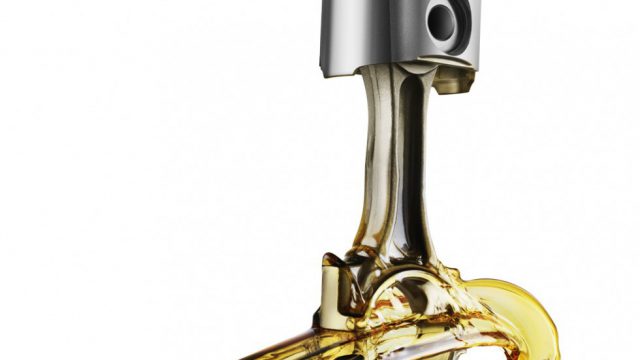
Everybody knows the oil has only one task, to lubricate the moving parts and reduce the wear. But this is just one of the tasks it accomplishes.
Besides lubrication, the oil also cleans and cools the engine by carrying away the heat from the moving parts. For long term use, it inhibits corrosion by keeping the metal parts away from air.
The wear is at its highest point at every start-up. The engine turns without proper lubrication. Keep in mind to wait at least one minute after every start to allow the oil pump to spread the oil inside the engine.
It’s just a thin layer of oil that manages to keep the movement going in extreme heat and pressure so it can’t last forever. That’s why you need to check the engine’s oil level sight glass more often.
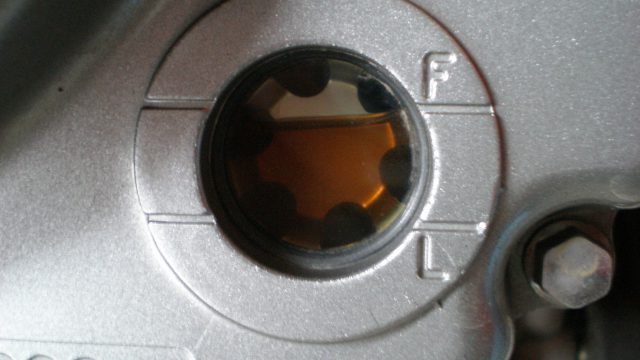
Oil viscosity – how to read the abbreviations
A running engine generates a lot of heat. The oil must keep the same properties regardless of the temperature. While a single grade oil gets too thin for modern engines, the multigrade oil is up for the job.
The main question comes when we see the numbers and it might seem confusing. You always have numbers followed by “W” and numbers again. The numbers relate to the oil viscosity rating at low and high temperatures.

The first number, the one before the “W” tells you the “cold” viscosity rating while the one after is the “hot” viscosity rating. For example, a 10W40 oil will act like a 10 viscosity rating single grade oil when cold and 40 viscosity rating when hot.
So when I plan a trip to Alaska, I have to buy oil with a lower number before “W” to help my engine turn more easily when I fire it up in the morning.
What is SAE and JASO
Nowadays the oil used for motorcycles has to satisfy a whole lot of standards. You probably noticed abbreviations like SAE or JASO written on your oil container and wondered what the heck means.

SAE- stands for Society of Automotive Engineers – This establishes a numerical code system for grading oil viscosity.
JASO- stands for Japanese Automotive Standards Organisation ( same thing as API ) – This organisation developed a grading system for motorcycle oils. Is mainly related to the oil ability to resist clutch friction. Since cars have separate gear box and engine, the motorcycle oil has to endure specific gearbox wear.
The motorcycle specific JASO ratings are:
JASO MA – This standard stands for single unit engines where the clutch gearbox and engine use the same oil.
JASO MB – This is a lower standard for engines that use different oils for engine and gearbox (oil-cooled BMW boxers and Harley Davidson).
JASO MA2 – This is a high standard oil mainly designed for bikes that come fitted with catalytic converters
Service interval
The engine’s life is strongly related to the quality and service frequency. The oil is the main factor that can lengthen the engine’s life. A quality oil will brings out the best power delivery from the power unit and can also lead to fuel savings and smooth gear shifting.
The manufacturer establishes service plans for every bike model. The oil and filter renewal has to take place at specific intervals: most motorcycles need an oil change at every two years or 6000 miles (10.000 km).
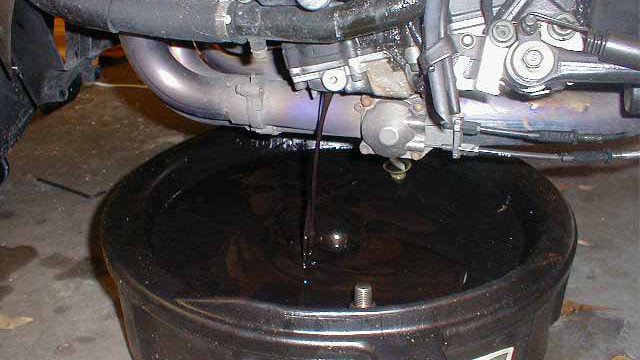
There is also the option of more often servicing. For example, if you ride a racing bike and you attend track days, you have to consider changing the oil at least every 600 miles.
Synthetic or Semi?
The market these days offers a couple of oil combinations. From mineral oil or semi-synthetic to full synthetic oils, you just have to choose the right one for your engine.
Motorcycle oil is mainly synthetic blend or fully synthetic. Keeping the oil film inside an engine that can reach tremendous revolution and temperatures is not an easy task. These types of oil contain anti-wear additives and viscosity improvers. This way the life is extended to handle longer service intervals.
The fully synthetic oil meets the highest requirements. The main advantages are increased protection, enhanced performance, fuel savings, the ability to comply with catalytic converter and longer service intervals. All of these in a wide range of temperatures.
The blend features almost the same characteristics but with lower performance and lesser protection. Of course, the semi is cheaper than fully synthetic, but you must use at least semi in your bike just for protection.

When running a modern sport bike, you must go for the fully synthetic oil and change it as often as possible. At least 3000 miles (5000 km) service intervals for your bike to perform at the highest level. On the other hand, you don’t need the most expensive oil for a 2007 commuter that hits maximum 6000 rpm. It will work just perfect with semi-synthetic.
